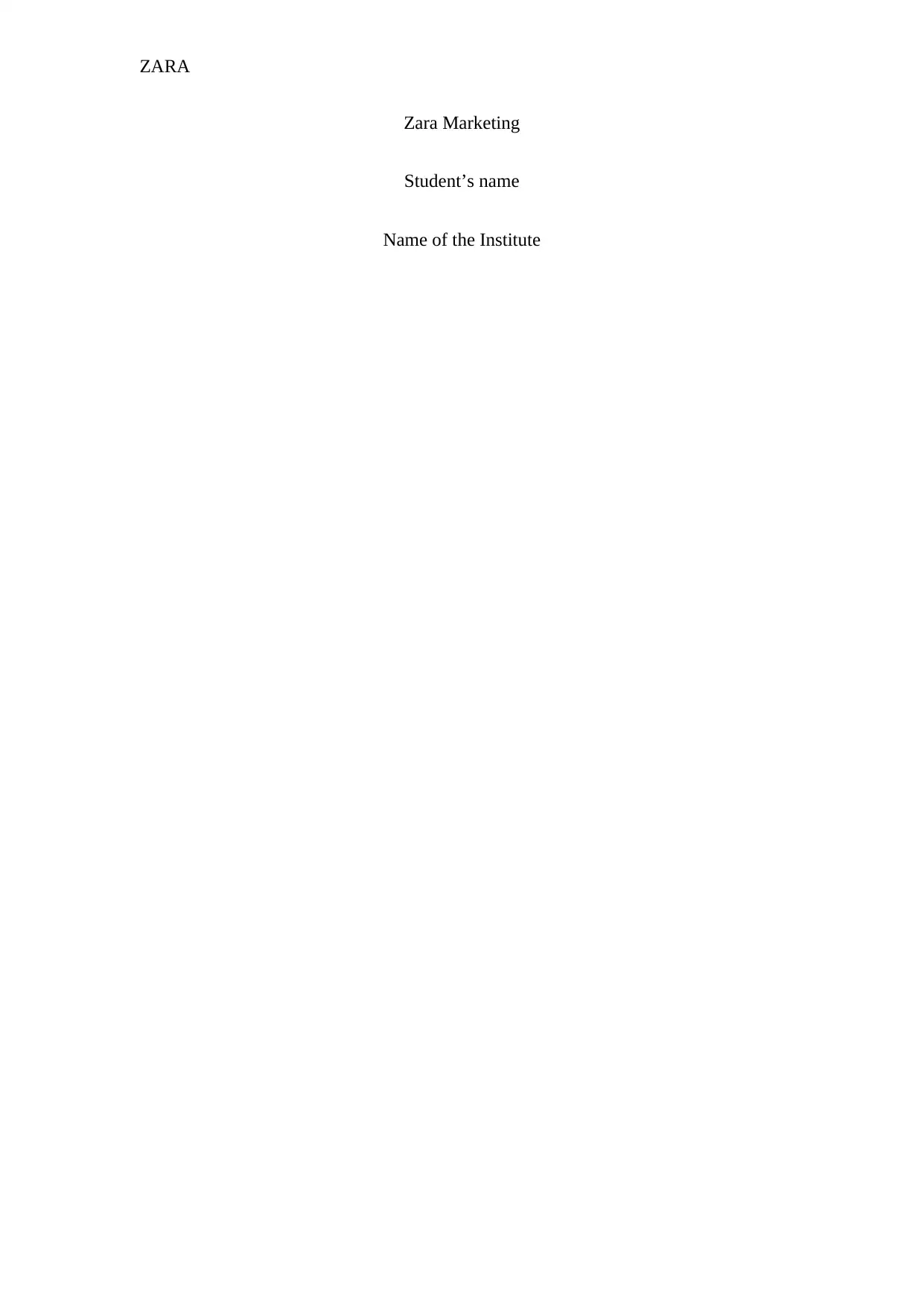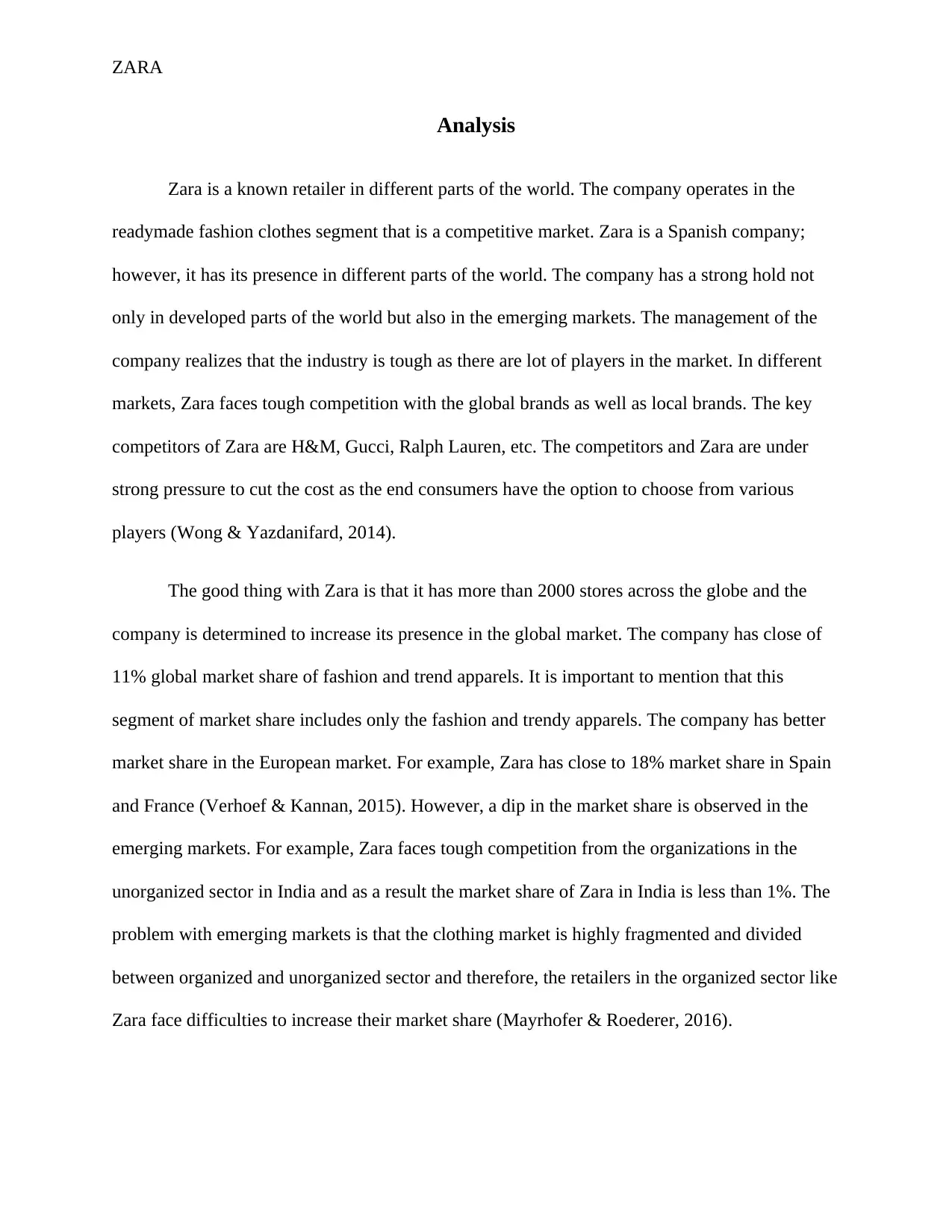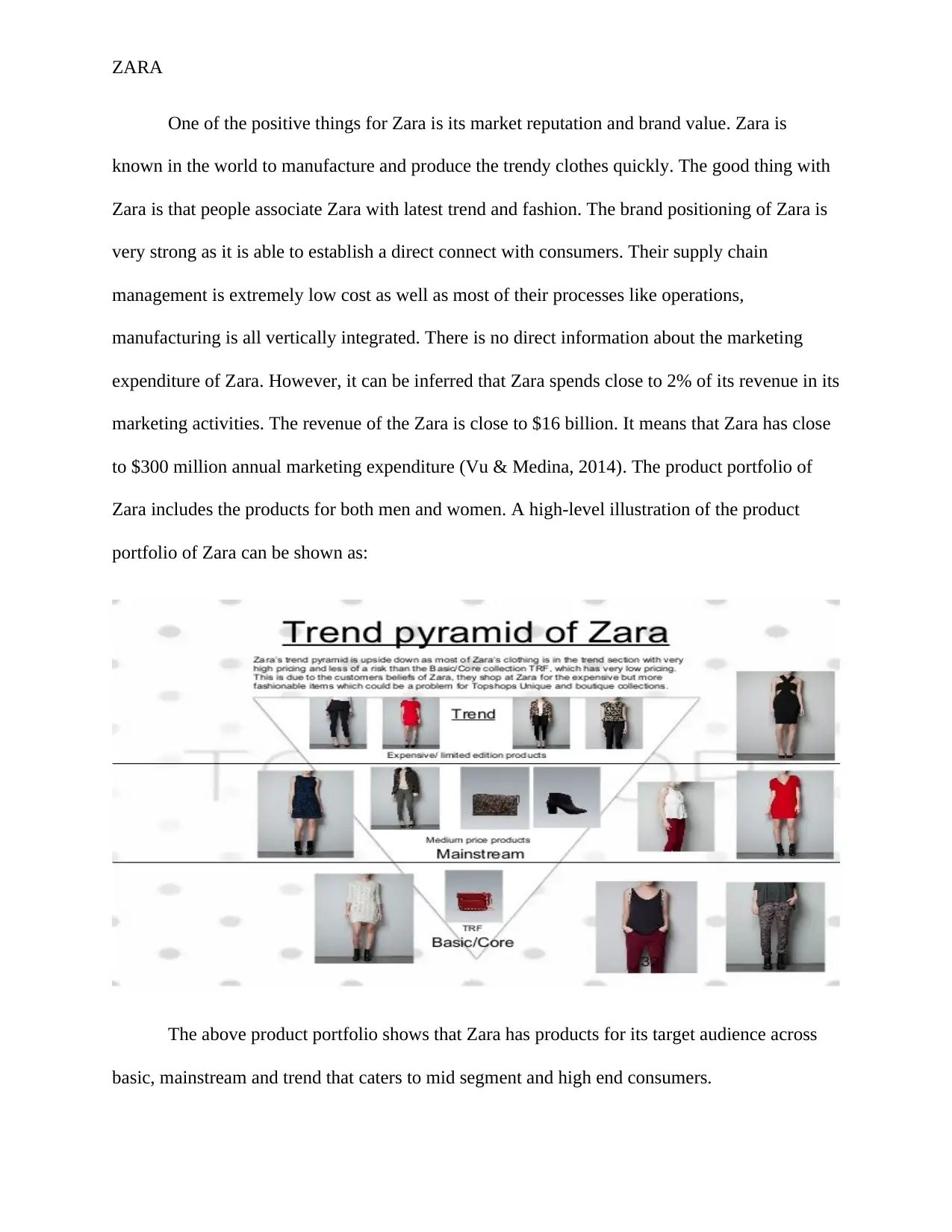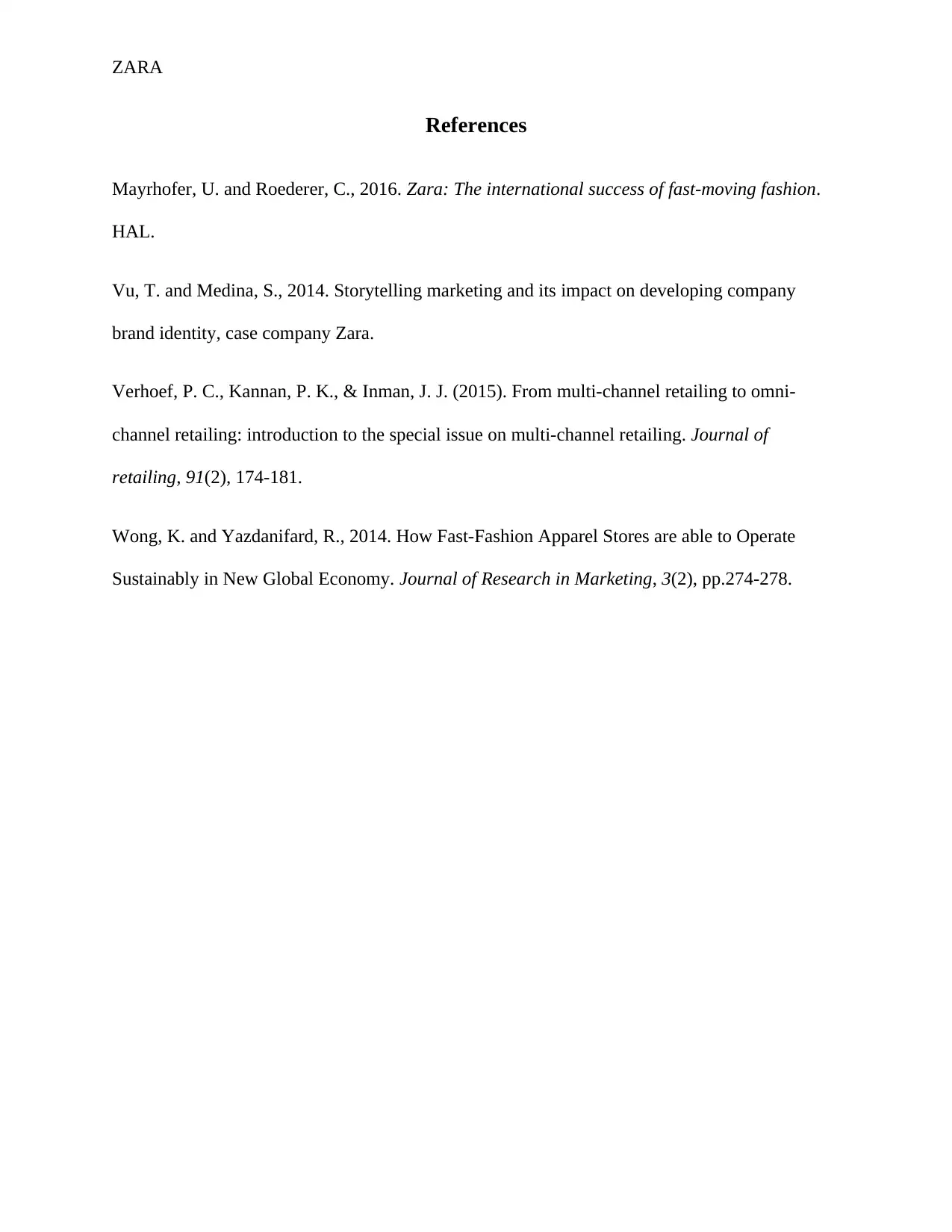Marketing Analysis of Zara: A Comprehensive Case Study
VerifiedAdded on 2020/04/01
|4
|705
|125
Case Study
AI Summary
This case study analyzes the marketing strategies of Zara, a prominent global fashion retailer. It examines Zara's competitive environment, including key competitors like H&M and Gucci, and its strong market presence across the globe, with significant market share in Europe. The analysis highlights Zara's brand positioning, emphasizing its association with the latest fashion trends and its efficient supply chain management. The study also touches upon Zara's product portfolio, which includes apparel for both men and women, catering to mid-segment and high-end consumers. The case study discusses the company's marketing expenditure and provides insights into its operations in both developed and emerging markets, noting challenges in the fragmented clothing market in countries like India. Overall, the document provides a comprehensive overview of Zara's marketing approach and its success in the fast-fashion industry, as well as the competitive landscape and the company's global presence.
1 out of 4











![[object Object]](/_next/static/media/star-bottom.7253800d.svg)